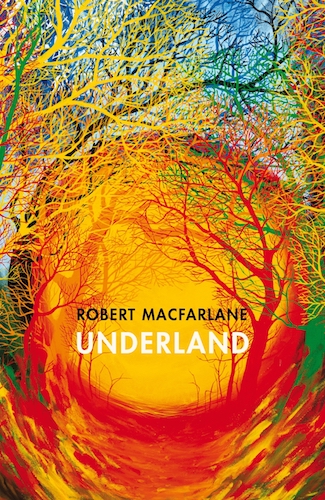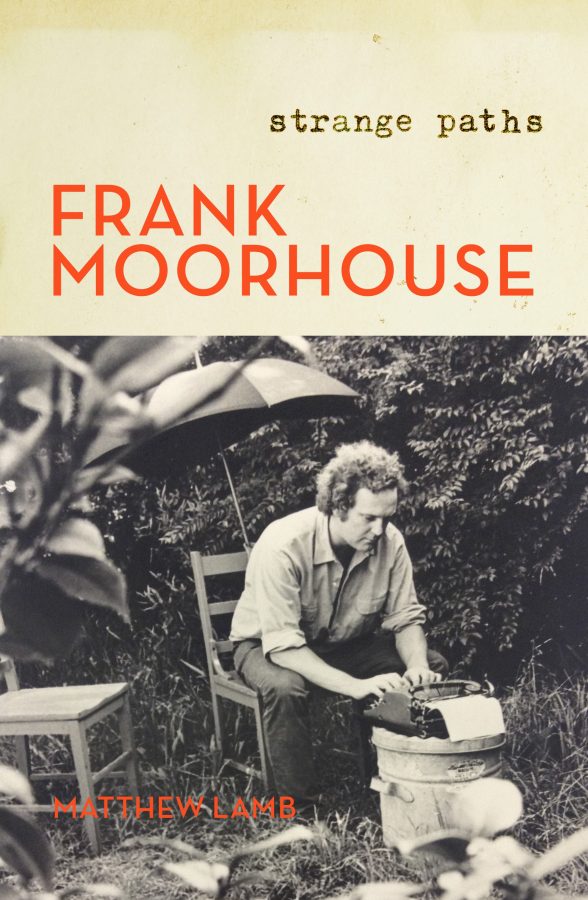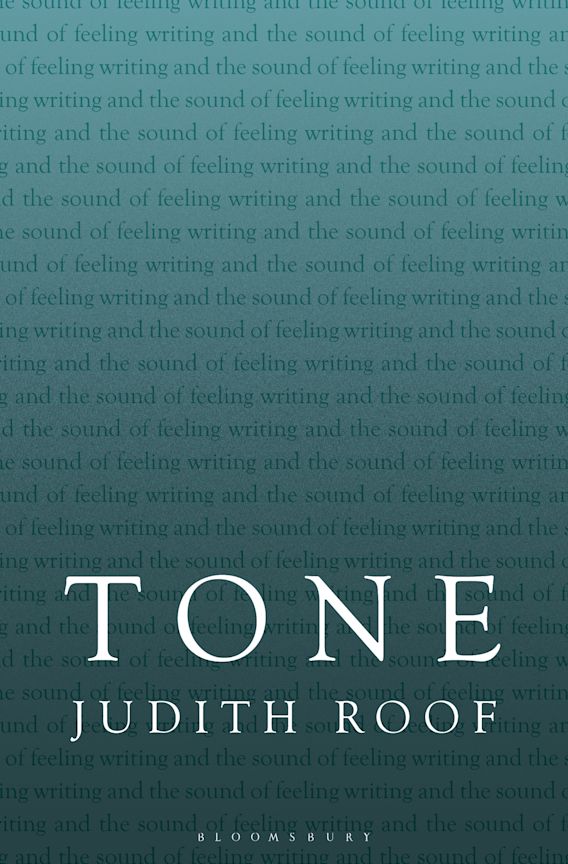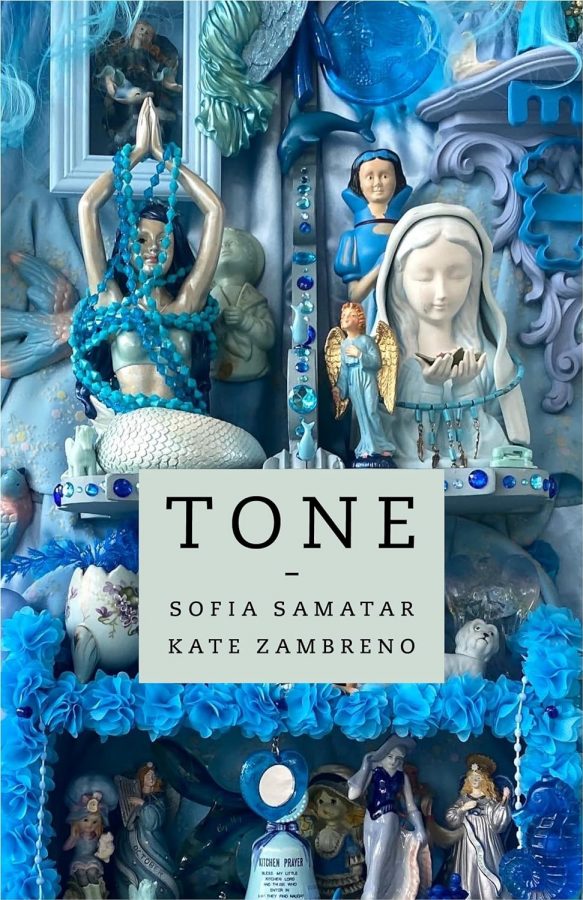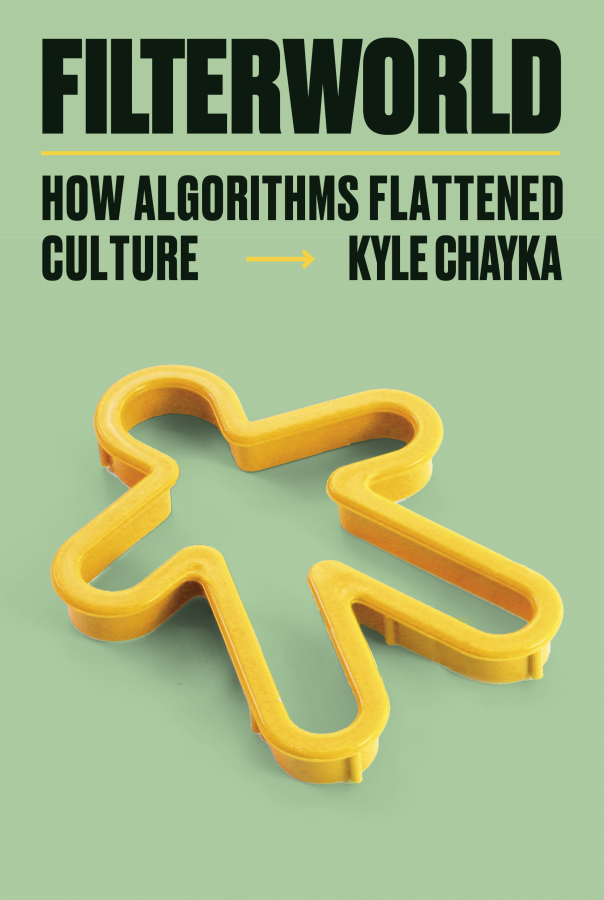In 2016 I spent six months on a fellowship at the Rachel Carson Center for Environment and Society in Munich. As part of the fellowship I was expected to participate in the active and thriving life of the centre. Among a host of weekly events was a work-in-progress session where ‘fellow fellows’ – as one historian dubbed the group – presented new work for feedback and discussion. These sessions were rigorous, critical, full of questions, queries and debate. Towards the end of one presentation, just as discussion was winding down, the topic of nature writing was mentioned. The room that day was full mainly of American scholars; historians, one philosopher, an anthropologist, a soil scientist, an ecocritic, a geographer, a film studies scholar, and no other writers. Across this group, reaction to the term nature writing was immediate and spontaneous. Everyone groaned and threw up their hands. ‘Not nature writing!’ they cried pushing back their chairs. It was the impetus to pack up and walk round the corner for dinner and German beer.
I was puzzled. I had long thought of nature writing as welcome relief from academic papers with their tight conventions and parameters. I thought of radical experimentations with form and language in the works of Henry David Thoreau and Annie Dillard. And of Barry Lopez’s shifts across scales and registers in Arctic Dreams. I thought, too, of Rebecca Solnit’s collaborative atlas of San Francisco, Infinite City, its integration of natural, cultural and political histories, and its evocation of the almost limitless ways in which any one place can be known and depicted. I thought of W. G. Sebald’s Rings of Saturn where the act of walking is used to connect the most astonishing array of things, human and nonhuman.
And I thought of Rachel Carson late in her career making a radical shift from lyrical writing about the sea to the composition of her final book, Silent Spring. ‘You do know, I think, how deeply I believe in the importance of what I am doing,’ she wrote to her close friend Dorothy Freeman of her new grim subject matter, synthetic chemicals and their toxic fallout. ‘Knowing what I do, there would be no future peace for me if I kept silent.’
As we walked from the Rachel Carson Center to a nearby bar, I cornered the film studies person who, I hoped, might have some sympathy for nature writing. ‘What was that reaction about?’ I asked. ‘In America,’ she said, ‘you get bashed over the head with nature writing. Even if you’re studying environmental science or environmental history, you have to study the nature writers. It’s such a huge field and you have to get across it and there are debates about who fits and you come across the same names over and over again.’
This is not the case in Australia. As Delia Falconer puts it in her 2017 essay ‘The Opposite of Glamour’, writing about nature ‘has never established itself as a stable commercial genre here but tends instead to emerge in feral form out of other genres, such as history and memoir.’ These feral forms don’t provide the foundation for a widely acknowledged canon let alone the basis for university curricula. We don’t turn for local lineage to a Gilbert White in the eighteenth century, a Thoreau in the nineteenth century, or a Carson, Dillard or Aldo Leopold in the twentieth. ‘Though this literature [of place] may be said to be flourishing in North America’, says Mark Tredinnick in his 2003 anthology A Place on Earth, ‘we hardly know what it is in Australia.’
Like Falconer, environmental historian Tom Griffiths has commented on the tendency of Australian ‘nature writing’ to reside in other forms such as memoir, travel writing, science writing, and novels. Griffiths identifies a distinctive popular environmental literature in the work of writers such as Donald Macdonald, Elyne Mitchell, Alice Duncan-Kemp, Hedley Finlayson and Alexis Wright. And there are good reasons, he argues, why we might not want to call it nature writing, mainly because a celebratory pastoral mode is so problematic in Australia with its colonial history.
In 2013 British author Richard Mabey defended nature writing in that country from charges of ‘pastoral nostalgia’. ‘To the extent that nature writing has a common spring, it is defiantly anti-pastoral,’ he wrote, ‘Hence the passion for the unfarmed wild, for the small, the particular and the local’. Yet, as Kathleen Jamie’s spirited, humorous and well-known 2008 critique of the concept of ‘the wild’ makes clear, this is an unstable category especially when deployed in relation to landscapes of Britain where ‘every square inch of it is “owned”’. Here, she observed in her essay ‘A Lone Enraptured Male’, everything is made over, managed, regulated, and full of complex, contested histories. If there does indeed exist a pocket of ‘wilderness’ it will have boundaries and protocols and there are sure to be other people, possibly lots of them, somewhere in close proximity – they just might not get included in the prose. ‘I’m not just groaning,’ Jamie wrote of ahistorical notions of wildness, ‘but banging my head on the table.’ Where are the working people? The locals? she asks.
In the Australian context, the notion of wilderness can take on added complexity. Anthropologist Deborah Bird Rose’s book Nourishing Terrains opens up a counterintuitive exploration of the concept, which she encountered through Daly Pulkara, one of her Aboriginal teachers in the Northern Territory:
The concept of wild country was brought home to me in a conversation with Daly Pulkara. We had stopped to look at some of the extreme erosion on Humbert River Station, and I asked Daly what he called this country. He looked at it long and heavily before he said: ‘It’s the wild. Just the wild.’ Daly went on to speak of quiet country – the country in which all the care of generations of people is evident to those who know how to see it. Quiet country stands in contrast to the wild: we were looking at a wilderness, man-made and cattle-made. This ‘wild’ was a place where the life of the country was falling into the gullies and washing away with rains.
Pulkura’s wild is marked by an absence of active human care and attentive presence. It is a place of rupture, a landscape of dispossession.
This conceptualisation of ‘the wild’ not only throws open puzzling and goading questions about responsibility and action in the landscape, it points towards other charges made against the genre of nature writing, especially as it has bloomed in Britain in recent years as the so-called ‘new nature writing’ (with Granta’s 2008 eponymous issue a key marker of this flourishing). As author Jessica J. Lee puts it, ‘The notion that the New Nature Writing has a diversity problem is not new.’ With this problem in mind, she founded a journal called The Willowherb Review dedicated to ‘bolstering nature writing by writers of colour’. Lee is Canadian, based in Germany, of Chinese and Welsh ancestry, and her memoir Turning, about swimming lakes in Berlin, contributes to the field. Other recent initiatives include new ‘writers in the forest’ residencies sponsored by the Forestry Commission in England to counter what Patrick Barkham calls point blank, ‘the extremely white worlds of both conservation and British nature-writing’.
Other objections: Richard Smyth points out long-standing connections between ardent celebrations of national and local landscapes and fascism. His case in point is Henry Williamson author of Britain’s much-loved classic Tarka the Otter. Williamson declared his admiration for ‘the great man across the Rhine’ and was an adherent of Oswald Mosley’s British Union of Fascists. (My grandmother, I was reminded, read Tarka to me as a child, as well as Gavin Maxwell’s Ring of Bright Water, another otter-inspired classic.) Smyth draws on a passage in Helen Macdonald’s H is for Hawk to show how nature loving can morph into border patrol. Out among the chalk-lands watching deer, she encounters a middle-aged man who comments on the scene before them. ‘Isn’t it a relief that there’re still things like that, a real bit of Old England still left, despite all these immigrants coming in?’ And, finally, perhaps one of Mark Cocker’s most pointed critiques of new nature writing (and he has voiced several) is his highlighting of the disjunction between Britain’s supposed love of nature and landscape, and its lamentable recent record of species decline and biodiversity loss documented in the State of Nature report in 2013. He questions nature writing as a ‘compensatory, nostalgic and internalized re-creation of what was once our birthright and is no more’ – like the light of a dead star emanating from a deceased source.
Nevertheless, nature writing has enjoyed a massive resurgence in the past decade in Britain – if not Australia. Whether we want to call it nature writing or not is a ‘moot point’, argues James Bradley. And, indeed, uneasiness about terminology seems to be one of the hallmarks of the more recent writing in this field. In 2015 Robert Macfarlane wrote:
‘Nature writing’ has become a cant phrase, branded and bandied out of any useful existence, and I would be glad to see its deletion from the current discourse. Yet it is clear that in Britain we are living through a golden age of literature that explores relations between selfhood, landscape and ethics… I don’t know what to call this writing, nor am I persuaded that it needs a name. It is not a genre or a school.
I prefer Rob Nixon’s formulation in Slow Violence of environmental literature as a ‘vigorous, varied writing on offer from within nonfiction’s broad domain’, compelling because of its ‘robust adaptability, imaginative and political’. Environmental literatures elastically conceived can take many forms – in the nonfiction arena alone they include essays, memoirs, public science writing, polemics, travel literature, graphic memoirs, manifestos, investigative journalism, and hybrid forms that integrate personal narrative with academic writing.
Of course to write of ‘nature’ these days (a hugely contested term within the environmental humanities) is to write of attrition, change, loss, and to write with – one way or another – scientific knowledge of human-induced transformations of environmental systems at a planetary scale. In 2005 Macfarlane noted the narrative challenges posed by climate change:
Apocalypse comes swiftly and charismatically … climate change occurs discreetly and incrementally, and as such, it presents the literary imagination with a series of difficulties: how to dramatize aggregating detail, how to plot slow change. Though the cumulative impact of climate change may be catastrophic, and may push us into a post-natural world … climate change does not yet have its millenarian icons: the grim brilliance of the nuclear flash point (a sudden sunrise which is really the last dusk), or the plump red button beneath its clear plastic flip-case, or the kitchen-table fallout shelter.
His new book Underland: A Deep Time Journey can be read, in part, as an extended reply to this conundrum. Largely through the Anthropocene concept, Macfarlane finds ways to engage deep time, uncertain futures and material traces of the impacts of climate change in the here and now. More than this, Underland is a deeply athletic and physically adventurous book – a kind of extreme sports travel writing. Macfarlane may have vowed in his first book, Mountains of the Mind, that he had given up risk-taking on mountains, ice and rock-face, but here he once again takes up climber’s rope and harness, pickaxe and crampons. Rather than ascend peaks and summits, he descends into the varied geographies that lie beneath our feet – caves, rocky chambers and labyrinths, large-scale mine tunnels riven beneath the North Sea, a science laboratory more than half a mile under the earth, underground rivers in Italy, mass graves in Slovenia, catacombs and quarry voids beneath the streets of Paris described by Walter Benjamin as a ‘subterranean city’ filled with ‘lightning-scored, whistle-resounding darkness’, and moulins bored into Arctic glaciers by swirling meltwater.
Underland is, Macfarlane professes, his most ‘convivial’ book to date – full of shared journeys and conversation with scientists (experts on tree–fungus mutualism or ‘the wood wide web’, a young physicist studying dark matter), a mine-safety specialist, fellow climbers and cavers, urban explorers, and a memorable besieged, passionate and burnt-out fisherman-activist in Norway. Arctic Dreams might be seen as something of a model here, filled as much with group excursions and telling conversation with a diverse cast of characters who inform multilayered knowledge of place – scientific, local, industrial, historical – as with ‘lone wanderings’. So too might Anna Lowenhaupt Tsing’s The Mushroom at the End of the World, which uses an inventive and descriptive ethnographic methodology, and which Macfarlane draws upon.
Macfarlane summarized the Anthropocene concept in 2016 as:
the new epoch of geological time in which human activity is considered such a powerful influence on the environment, climate and ecology of the planet that it will leave a long-term signature in the strata record.
The term was proposed by atmospheric chemist Paul Crutzen and biologist Eugene F Stoermer in 2000, and then amplified by Crutzen in a Nature article in 2002. Since then it has received vast attention both within and well beyond scientific circles. The term has also been deftly disputed and critiqued, especially by humanities and social sciences scholars. Here, though, Macfarlane grapples with the concept in productive ways for its invitation to journey to places where deep time – ‘the dizzying expanse of earth history that stretches away from the present moment’ into both past and future – can not only be thought about but encountered in direct, bodily, and visceral ways.
One of the book’s central premises and also an animating structural force impelling the subterranean travel narratives, is the idea of ‘deep time as a radical perspective, provoking us to action not apathy’:
For to think in deep time can be a means not of escaping our troubled present, but rather of re-imagining it; countermanding its quick greeds and furies with older, slower stories of making and unmaking. At its best, a deep time awareness might help us see ourselves as part of a web of gift, inheritance and legacy stretching over millions of years past and millions to come, bringing us to consider what we are leaving behind for the epochs and beings that will follow us.
Here deep time consciousness prompts an ethical stance. Macfarlane is not alone in embracing and exploring notions of deep time in these times of trouble. Historian and postcolonial theorist Dipesh Chakrabarty, philosopher Bruno Latour, geographer Kathryn Yusoff, all contend with long-term perspectives and their humbling reminder that humans do not, as Chakrabarty puts it, ‘represent any point of culmination in the story of the planet.’ Deep time stories anchor stories of the evolution of earth, of its climate, and of the complex, interwoven lives on it. Chakrabarty writes:
This is where Latour’s – and some other scholars’ attempts – to open up vistas of aesthetic, philosophical, and ethical thought help us to develop points of view that seek to place the current constellation of environmental crises in the larger context of the deeper history of natural reproductive life on this planet. This I see as the primary purpose of the ‘new’ humanities of our times.
Around 1990 Chakrabarty was seen to be at the vanguard of the ‘new humanities’ of the period – postcolonial and subaltern studies, gender studies, among others. His bracing declaration here illustrates another epochal shift. Macfarlane’s Underland draws upon works within this ‘new’ field. His bibliography includes Jane Bennett, Chakrabarty, David Farrier, Latour, Timothy Morton, Stephen Muecke, Tsing, and Yusoff; and his language, on occasion, uses terms familiar within the environmental humanities – entanglements, lively matter, vibrancies, conviviality, ‘multi-species makings’.
Underland appears at a moment when the impacts of global warming are making themselves evident in tangible, unnerving, and demonstrable ways. For years, writers, humanities academics, artists and activists considered that the supposed remoteness of climate change was one of the greatest stumbling blocks in terms of conveying and apprehending its urgency. Its impacts would be felt in some distant future, likely in far-off places (a notion that depends very much where you happen to be born or live in the world). As an entity global warming evaded direct human sensing – how do you see, touch, smell accumulating CO2 in the air or feel a globally distributed temperature increase? Morton’s concept of the hyperobject is useful shorthand for this idea – global warming understood as so ‘massively distributed in time and space’, beyond usual human scales of reference, as to be incomprehensible or ‘unfathomable’.
Now, though, in an eerily poetic, vital and compelling passage early in the book, Macfarlane is able to create a list of great disturbances and ‘surfacings’. As temperatures increase, ice melts and drought strikes, things – dark things – become visible that have long lain buried. Bodies are expelled from diminishing Alpine and Himalayan glaciers, methane deposits are ‘leaking through “windows” in the earth opened by melting permafrost’, and anthrax spores released from reindeer corpses once safely encrypted in frozen soil. The same kind of release may be imminent for hundreds of thousands of gallons of American Cold War chemical contaminants sealed under the ice cap in Greenland and now ‘begun to move towards the light’. Meanwhile in Britain ‘aridity as X-ray’ exposes imprints of ancient Roman and Neolithic structures usually cloaked and obscured by verdant vegetation. One of Macfarlane’s most resonant examples is the ‘hunger stones’ exposed by dropping water levels in the River Elbe where it flows through the Czech Republic. One of these carved boulders ‘used for centuries to commemorate droughts and warn of their consequences’ bears the inscription ‘“Wenn du mich siest, dann weine”: “If you see me, weep.”’
Climate change is now all about us. New research published in the most recent edition of Nature reiterates that the Arctic is warming fast. Rather than thawing gradually from the surface downwards at perhaps a couple of centimetres per year, permafrost across the Arctic and Boreal region is collapsing suddenly, not only releasing carbon but also unstitching the landscape itself. Roads buckle, houses become unstable, craters gape open, hillsides liquefy and ‘lands that were forested a year ago are now covered with lakes’. For local people, these landscapes are becoming too dangerous to travel; scientific equipment left in the field is gone by next fieldwork season, swallowed by the radically transfiguring topography. The Intergovernmental Science-Policy Platform on Biodiversity and Ecosystem Services releases a report finding that ‘around 1 million animal and plant species are now threatened with extinction, many within decades, more than ever before in human history’. Such calamities overturn the notion of global warming as ‘slow violence’ – as formless threat, as incremental, attritional, drawn-out and convoluted cataclysm. They confirm scientist modeling of unpredictable, abrupt and irreversible ‘tipping points’.
And it is the idea of Anthropocenic strata – stuff itself as both register and victim of environmental crisis – that is like a siren song in Underland. In effect, Macfarlane’s book treats these phenomena and considerations as an invitation to undertake a series of intimate encounters with the sheer materiality of matter: stone, sediment, scree, water, ice, human detritus. On the latter: wrack-lines of plastics washed up on the most inaccessible shores of Norway; heavy excavation machinery destined to be abandoned in mine tunnels, mineral returning to mineral (a kind of ‘Anthropocene future fossil’); radioactive spent fuel rods from nuclear reactors buried in Finland. His book is also an encounter with empty spaces enclosed by rock, earth, ice: chasm, abyss, crevasse, tomb, grave, moulin, tunnels used by extractive industries, catacomb, and horizontal crawl spaces so narrow and compressed that he has to lie flat and turn his skull sideways to proceed. ‘The clearance to the sides is so scant that my arms are nearly locked to my body. … I can feel the stone around me, the stone that encases me, the stone that is measuring me up like a coffin, starting to vibrate.’
The book is structured into three ‘chambers’ – Britain, Europe, The North – each with attendant theme, Seeing, Hiding, Haunting. In a preface or ‘entry’ to his first chamber, via a kind of imagined ‘master’ or über (unter?) underground space, a series of iconic images play across stone walls of burial, excavation, and physical trace (stenciled hands, cave paintings). These allow Macfarlane to identify three recurrent and structuring motifs for the book, which he refers to as distinctively subterranean ‘tasks’:
The same three tasks recur across cultures and epochs: to shelter what is precious, to yield what is valuable, and to dispose of what is harmful. Shelter (memories, precious matter, messages, fragile lives). Yield (information, wealth, metaphors, minerals, visions). Dispose (waste, trauma, poison, secrets). Into the underland we have long placed that which we fear and wish to lose, and that which we love and wish to save.
‘Why go under?’ he asks and it is largely to encounter in embodied ways instances of sheltering, yielding, disposing. As soon as he descends underground in earnest, it’s via ‘a passage of stone that deepens steeply into the earth. Colour depletes to grey, brown, black. Cold air pushes past. Above is solid rock, utter matter. The surface is scarcely thinkable.’
I have had my own short experience of being trapped inside dark rock, of spending time alone in a cold, water-filled cave, which I’ve written about elsewhere. I have also spent time in the French Alps in Chamonix with a friend’s mountaineering brother who lived there with his French mountaineering wife. He later fell to his death on a descent of Mount Cook when a cornice of snow and ice snapped beneath his feet. And so I recognize at least to some small extent the sheer riskiness and physical demands of Macfarlane’s journeys. At moments he describes jitters of fear crawling through his body – ‘little demons of worry bite at my stomach’; ‘claustrophobia grips me like a full-body vice … setting black stars exploding in my head’. Understandably. These are not journeys for the faint-hearted. And at times his extreme feats have the same logic he identifies and interrogates in Mountains of the Mind (and which reminds me of my dead friend and those he left behind): ‘To reach a summit is very palpably to have triumphed over adversity: to have conquered something, albeit something utterly useless.’
To go under also means to resurface and to gain a heightened, super-charged almost hallucinogenic appreciation of life above. During a stint of urban exploration, after days spent below the streets of Paris, Macfarlane and his companions emerge covered with sweat and stone dust through an access hole into a train tunnel. ‘The upper world moves into view. A pigeon glides, stiff-winged, across the arch-framed sky. Steep sides of the cutting show themselves, acacia branches leaning in from the banks to drop their butterfly leaves.’ And then: the ‘impossible sun’. The familiar made strange. Such moments of descent into and reemergence from darkness are one of the book’s refrains. There is a kind of adrenalin kick that accompanies each transition. And the language takes on an abbreviated, present tense, staccato rhythm as if drawn from the immediacy of Macfarlane’s notebooks.
He does express some doubt about urban exploration, though, defined by him as adventurous trespass in the built environment: ‘I dislike its air of hipster entitlement, its inattention towards those people whose working lives involve the construction, operation and maintenance – rather than the exploration – of these hidden structures of the city.’ Likewise, he says, of ‘insensitivity to those people who have no choice but to live in contexts of dereliction and ruin’. In such moments of adventuring, the links to Macfarlane’s motifs and imperatives of deep time are stretched thinnest. Jamie’s critique of ‘the wild’ resonates here: where are the working people, the more ordinary underland lives? They certainly don’t receive the sustained attention of, say, Michael Taussig’s My Cocaine Museum and his detailed accounts of Afro-Columbian gold miners and gold divers in Columbia as they encounter rain, river, heat, stone, darkness. Or Tsing’s considerations of itinerant matsutake collectors, webbed into global commodity chains.
The idea of home or more everyday domestic life also features very little in this book. Should it? I’m not sure. The two scenes that feature Macfarlane’s children are laden with intimations of their mortality. Of H is for Hawk, Macdonald was able to note that: ‘What I did with Hawk was, I guess, a bit unusual in that I didn’t go out and try to find wilderness out there. I brought it inside the house imaginatively, and that was in many ways a really unusual thing.’ Jamie in Sightlines also springs her writing out of everyday encounters with the natural world: gazing at a lunar eclipse from the top window of her house while her children play video games below; museum staff polishing dinosaur bones. ‘To give birth is to be in a wild place’, she says; bacteria raging as disease through our bodies or seen through a microscope are also wild – she’s insisting on far less ‘expeditionary’ and ‘high adventure’ conceptualisations of our interrelationship with the natural world. After all, much generation of ‘Anthropocene future fossils’ (plastics and other waste) and the tight enmeshment of people and nature that the Anthropocene concept highlights, occur either in domestic spaces or via their supply lines (food, water, energy, manufacturing processes).
Some of Underland’s most moving passages come towards the end of the book when Macfarlane heads far north. In theory we don’t need more images from ‘the north’. It has long supplied icons of global warming that can lapse into triteness, exhausted through overuse – melting ice, stranded polar bears. It has also long fuelled creative response. To my mind, a pressing challenge now, one I’ve begun writing about lately, is to find narrative shape, images, stories, and other representational modes for the ‘convoluted cataclysms’ occurring all about us in more ‘ordinary’ places.
And yet, Macfarlane reports back to the temperate zones with great poignancy, insight and feeling. The Norwegian fisherman Bjørnar fighting ‘big oil’ incursions so hard he breaks down, recovers to resume the fight, breaks down again, and so on. Tons of ice the size of a cathedral, a whole city of cathedrals, emerging like a freight train, sheer off the calving face of the Knud Rasmussen glacier. ‘Glacial pace,’ Macfarlane reminds us, ‘used to mean movement so slow as to be almost static.’ Camped atop ice for days and weeks, Macfarlane’s notebook entries dwindle, the words black slowing scrawl marks on the page until they almost cease, the idea of the Anthropocene striking him, like many others, dumb. GPS devices warn of imminent collision with ice-forms that no longer exist. On land, set knowingly and with aplomb by Macfarlane against ‘the Holocene delusion of a planetary interior containing inexhaustible wealth and energy’, one of the locals called Geo says: ‘In ten years, no snow, no ice, no hunting, no dogs.’
Works Cited
Patrick Barkham, ‘Enchanted Forests: The Women Shaking up Nature Writing’, Guardian (11 March 2019).
Saskia Beudel, ‘Walking: West MacDonnell Ranges’ in Best Australian Essays 2006 (Melbourne: BlackInc).
– ‘Frogwatching: Charting Climate Change’s Impact in the Here and Now’, The Conversation (6 July 2018)
James Bradley, ‘Writing on the Precipice’, Sydney Review of Books (21 February 2017).
Rachel Carson, Always, Rachel: The Letters of Rachel Carson and Dorothy Freeman, edited by Martha Freeman (Boston: Beacon Press, 1995).
Dipesh Chakrabarty, ‘Humanities in the Anthropocene: The Crisis of the Enduring Kantian Fable’, New Literary History 47, 2016, pp. 377–397.
Mark Cocker, Our Place (London: Jonathan Cape, 2018).
Delia Falconer, ‘The Opposite of Glamour’, Sydney Review of Books (28 July 2017).
Granta 102, The New Nature Writing (Summer 2008).
Tom Griffiths, ‘Australian “Nature Writing”’, presented at the Environmental Writing Symposium, convened by Saskia Beudel and Amanda Johnson, University of Melbourne, 7 June 2018.
Intergovernmental Science-Policy Platform on Biodiversity and Ecosystem Services (IPBES), ‘Media Release: Nature’s Dangerous Decline “Unprecedented”: Species Extinction Rates “Accelerating”’ (May 2019).
Jason Mark, ‘In Conversation with Helen Macdonald’, Sierra Club (8 June 2016).
Kathleen Jamie, ‘A Lone Enraptured Male’, London Review of Books (6 March 2008).
– Sightlines (Sort of Books, 2012)
Barry Lopez, Arctic Dreams: Imagination and Desire in a Northern Landscape (New York: Scribner, 1986).
Richard Mabey, ‘In Defence of Nature Writing’, Guardian (18 July 2013).
Helen Macdonald, H is for Hawk (London: Jonathan Cape, 2014).
Robert Macfarlane, Underland: A Deep Time Journey (London: Hamish Hamilton, 2019).
– ‘Generation Anthropocene: How Humans Have Altered the Planet Forever’, Guardian (1 April 2016).
– ‘Why We Need Nature Writing’, New Statesman (2 September 2015).
– ‘The Burning Question’, The Guardian (24 September 2005).
– Mountains of the Mind: A History of a Fascination (London: Granta Books, 2003).
Timothy Morton, Hyperobjects: Philosophy and Ecology after the End of the World (Minneapolis: University of Minnesota Press, 2013).
Rob Nixon, Slow Violence and the Environmentalism of the Poor (Harvard: Harvard University Press, 2013).
Richard Smyth, ‘Nature Writing’s Fascist Roots’, New Statesman (3 April 2019).
Michael Taussig, My Cocaine Museum (Chicago: University of Chicago Press, 2004).
Mark Tredinnick, A Place on Earth: An Anthology of Nature Writing from Australia and North America (Nebraska: University of Nebraska Press, 2004).
Anna Lowenhaupt Tsing, The Mushroom at the End of the World: On the Possibility of Life in Capitalist Ruins (Princeton: Princeton University Press, 2017).
Merritt R. Turetsky et al, ‘Permafrost Collapse is Accelerating Carbon Release’, Nature 569, 2 May 2019, 32–34.
